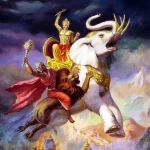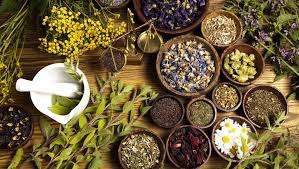Traditional medicine provides health care to many around the globe – the WHO is trying to make it safer and more standardized
Traditional medicine has been a cornerstone of healthcare for generations, providing solace and healing to millions worldwide. With approximately 80% of the global population relying on traditional remedies for their healthcare needs, it’s clear that these age-old practices hold immense significance. Rooted in cultures and traditions, therapies such as herbal medicine, acupuncture, Ayurveda, and Unani have been the bedrock of healthcare for centuries. As of August 2023, the World Health Organization (WHO) and the Indian government have taken a momentous step towards acknowledging and enhancing the potential of traditional medicine through the inaugural Traditional Medicine Summit. This landmark event brought together stakeholders from a staggering 88 nations, fostering the exchange of best practices and innovations in the realm of traditional healthcare.
The Global Appeal of Traditional Medicine
Traditional medicine, often lauded for its cost-effectiveness and cultural alignment, relies heavily on the use of natural sources, contributing to up to 50% of conventional drug formulations. Its appeal lies not only in its affordability but also in its ability to resonate with diverse communities across the globe. The harmony between traditional practices and the beliefs of the communities they serve is a testament to their enduring relevance.
Advocating for Standards and Safety
While traditional medicine has been a lifeline for many, it’s not without its challenges. Advocates have long called for the establishment of standards and robust data collection mechanisms to ensure enhanced safety and wider access. In 2023, the WHO initiated a groundbreaking endeavour with the “2023 Global Survey on Traditional Medicine,” aiming to address these concerns and create a roadmap for the future.
The Acupuncture Conundrum
Among the array of traditional therapies, acupuncture has gained prominence, even integrating into mainstream U.S. medicine. However, its path to acceptance is not without hurdles. Acupuncture, with its potential to offer a multitude of benefits, also carries inherent risks if administered improperly. These risks encompass infections and injuries, underscoring the need for comprehensive safety protocols.
A Ray of Hope: Battlefield Acupuncture
Amidst the challenges, there are shining examples of how acupuncture can be harnessed for the greater good. Battlefield acupuncture, a specialized form of this ancient therapy, has emerged as a powerful tool in pain management. Its ability to reduce pain effectively has garnered attention and praise, showcasing the potential of traditional practices even in modern medical settings.
Beyond Acupuncture: Meditation and Yoga
The scope of traditional medicine extends far beyond acupuncture. Practices such as meditation and yoga hold immense promise in addressing complex health issues, particularly post-traumatic stress disorder (PTSD). As the world grapples with the rising prevalence of PTSD, traditional methods offer a glimmer of hope. Their holistic approach to healing encompasses not just the physical but also the mental and emotional aspects of well-being.
Towards Standardization: WHO’s Endeavour
The global variations in acupuncture training and practices have not gone unnoticed. Recognizing the need for coherence and safety, the WHO introduced standardized guidelines in 2021. These guidelines aim to bridge the disparities in acupuncture training worldwide, ensuring that practitioners adhere to uniform standards of care. This monumental step is poised to elevate the credibility and safety of traditional medicine on a global scale.
The Rising Tide of Interest
The surge in interest surrounding traditional medicine is undeniable. As more people turn to these age-old practices for their healthcare needs, the demand for rigorous research and safety standards continues to grow. Traditional medicine, with its deep roots and undeniable relevance, is not just a relic of the past but a beacon of hope for the future of global healthcare.
In conclusion, traditional medicine stands at the crossroads of tradition and innovation. With the WHO’s initiatives, the world is poised to harness the potential of these practices, ensuring that they remain a safe and effective option for generations to come. As the global community unites to unlock the full potential of traditional medicine, it is clear that these time-tested therapies will continue to play a vital role in healthcare around the world.
Hope you loved reading our blog on Traditional medicine provides health care to many around the globe – the WHO is trying to make it safer and more standardized
Do Follow Us On Twitter – https://twitter.com/Uniqverses708
We Have a Wide Range of Unique information For You On Uniqverses.com
Please like, comment & Share if you want us to keep bringing these amazing and unique information for you.








